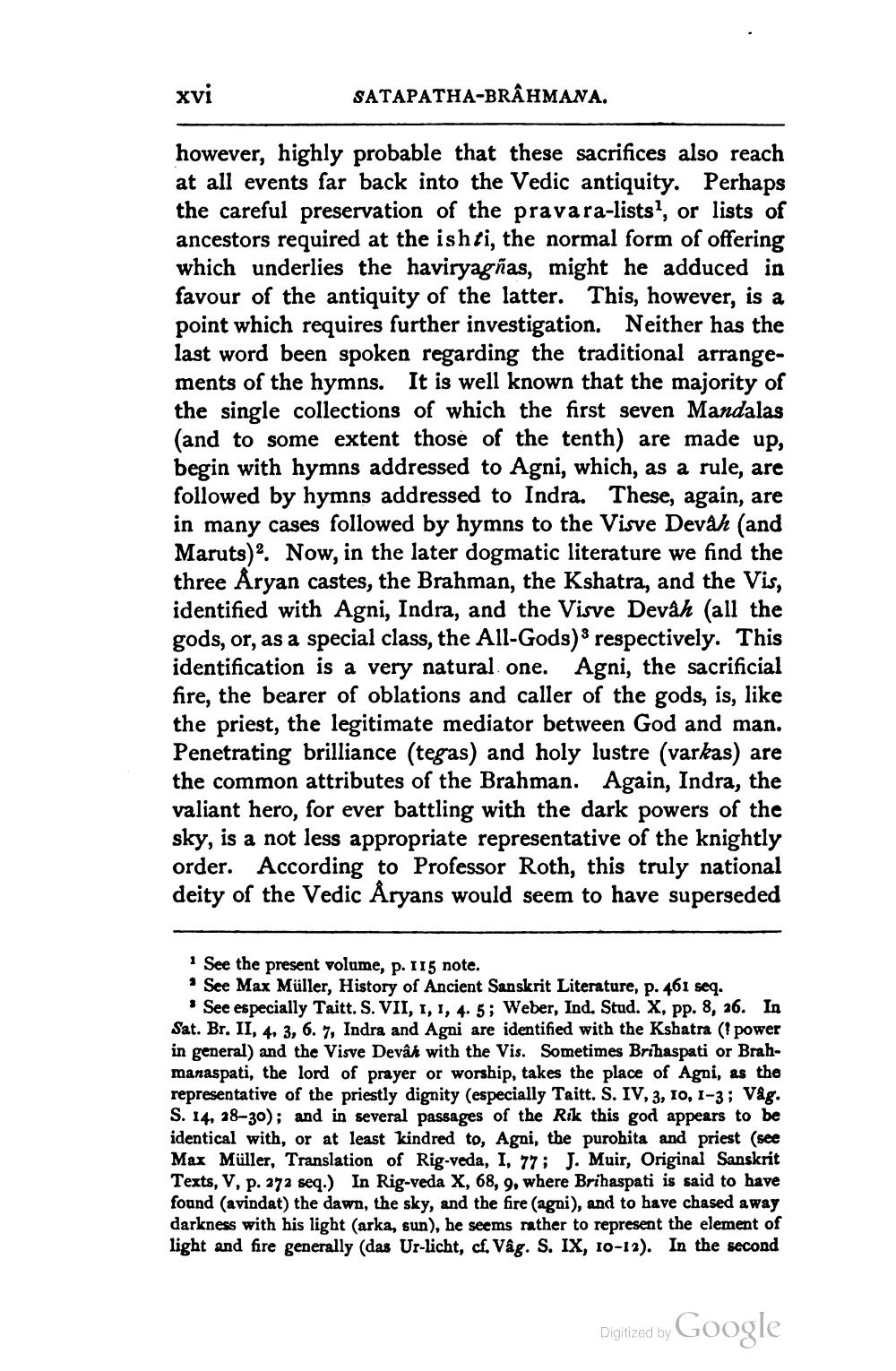________________
xvi
SATAPATHA-BRÂHMANA.
however, highly probable that these sacrifices also reach at all events far back into the Vedic antiquity. Perhaps the careful preservation of the pravara-lists, or lists of ancestors required at the ishti, the normal form of offering which underlies the haviryagñas, might he adduced in favour of the antiquity of the latter. This, however, is a point which requires further investigation. Neither has the last word been spoken regarding the traditional arrangements of the hymns. It is well known that the majority of the single collections of which the first seven Mandalas (and to some extent those of the tenth) are made up, begin with hymns addressed to Agni, which, as a rule, are followed by hymns addressed to Indra. These, again, are in many cases followed by hymns to the Visve Devåh (and Maruts). Now, in the later dogmatic literature we find the three Åryan castes, the Brahman, the Kshatra, and the Vis, identified with Agni, Indra, and the Visve Devah (all the gods, or, as a special class, the All-Gods) respectively. This identification is a very natural. one. Agni, the sacrificial fire, the bearer of oblations and caller of the gods, is, like the priest, the legitimate mediator between God and man. Penetrating brilliance (tegas) and holy lustre (varkas) are the common attributes of the Brahman. Again, Indra, the valiant hero, for ever battling with the dark powers of the sky, is a not less appropriate representative of the knightly order. According to Professor Roth, this truly national deity of the Vedic Åryans would seem to have superseded
See the present volume, p. 115 note. See Max Müller, History of Ancient Sanskrit Literature, p. 461 seq. . See especially Taitt. S. VII, 1, 1, 4. 5; Weber, Ind. Stud. X, pp. 8, 36. In Sat. Br. II, 4, 3, 6. 7, Indra and Agni are identified with the Kshatra (power in general) and the Visve Devâh with the Vis. Sometimes Brihaspati or Brahmanaspati, the lord of prayer or worship, takes the place of Agni, as the representative of the priestly dignity (especially Taitt. S. IV, 3, 10, 1-3; Våg. S. 14, 28-30); and in several passages of the Rik this god appears to be identical with, or at least kindred to, Agni, the purohita and priest (see Max Müller, Translation of Rig-veda, I, 77; J. Muir, Original Sanskrit Texts, V, p. 272 seq.) In Rig-veda X, 68, 9, where Brihaspati is said to have found (avindat) the dawn, the sky, and the fire (agni), and to have chased away darkness with his light (arka, sun), he seems rather to represent the element of light and fire generally (das Ur-licht, cf. Vág. S. IX, 10-12). In the second
Digitized by Google




